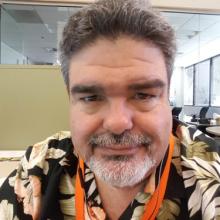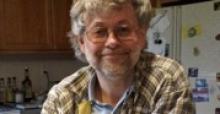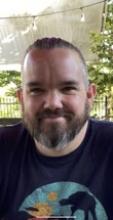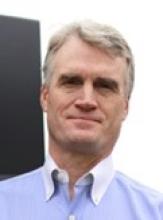Photovoltaic Microinverters and Energy Storage Systems, 2022

Mr. Mark Baldassari
Director of Codes and Standards
Enphase Energy, Petaluma, CA
Thu, 10/20/2022
Abstract: The presentation will cover how solar photovoltaic cells convert solar energy into usable power. The effects on energy production due to insolation (sunlight) and temperature. Simple solar systems cover traditional string inverters versus modern microinverters and discusses the safety benefits. Energy storage is discussed starting with why storage is needed for several applications. A simple single line diagram is presented showing how PV and energy storage can be incorporated into a home. A quiz is presented to test the audience on the major topics presented.
Bio: Mr. Baldassari has over 39 years experience in engineering and product development and over 14 years with Enphase Energy, where he holds the position of Director, Codes and Standards. Currently, he actively participates in several Codes and Standards development groups both internationally and domestically. He is involved with the development of the National Electrical Code, product safety standards with Underwriters Laboratory, and international installation and safety standards. Mr. Baldassari has a bachelor’s degree in electrical and Electronic Engineering from California State University Sacramento.
Class Modular Sensors: Used in Outdoor IoT Monitoring

Mr. Neil Hancock
CTO
Azonde, Aznode.com
Thu, 10/06/2022
Abstract: The low-cost Internet of Things architecture is well suited for remote environmental monitoring. This talk covers a device designed to be low cost, solar powered, and used outdoors, for critical stream level monitoring in the drought stricken North Bay. The “open source” Stroud Water Research Center's "Modular Sensors" software and the Mayfly microcomputer facilitate environmental scientists collecting physical measurements from the “great outdoors”. Low-cost board level sensors using ADC, I2C or 1Wire are well understood and relatively low power. External transducers have a wider range of sensing, and require interfaces using the newer USGS SDI-12 three wire water world protocol, and the older stable Modbus 4wire RS485. Each brings new powering challenges. The software code and hardware definitions are stored in git, a distributed “Version Control System” allowing easy incremental traceable improvements. The package comes with technical debt that needs characterizing and analyzing.
Bio: Neil Hancock is a Chartered Engineer, active in circuit design and firmware for 40 years. For the first 20 years he worked with large companies in telecom equipment design and more recently in Internet of Things design for environmental monitoring. Neil volunteers as a Planning Commissioner for the City of Cotati, an Industry Advisor for SSU, is a long-term IEEE member, and enjoys short bicycle rides to coffee shops in Sonoma County. He received his BSc in Electronic Engineering, from City, University of London, United Kingdom.
Chartered Engineers (CEng) develop solutions to engineering problems using new or existing technologies, through innovation, creativity and change and/or they may have technical accountability for complex systems with significant levels of risk.
AI Inference with Intel® FPGA AI Suite

Mr. Kevin Drake
Application Engineer
Intel Corporation
Thu, 09/15/2022
Abstract: Intel® FPGAs enable real-time, low-latency, and low-power deep learning inference combined with the following advantages:
- I/O flexibility
- Reconfiguration
- Ease of integration into custom platforms
- Long lifetime
Intel® FPGA AI Suite was developed with the vision of ease-of-use of artificial intelligence (AI) inference on Intel® FPGAs. The suite enables FPGA designers, machine learning engineers, and software developers to create optimized FPGA AI platforms efficiently.
Utilities in the Intel FPGA AI Suite speed up FPGA development for AI inference using familiar and popular industry frameworks such as TensorFlow* or PyTorch* and OpenVINO toolkit, while also leveraging robust and proven FPGA development flows with the Intel Quartus Prime Software. The Intel® FPGA AI Suite tool flow works with the OpenVINO toolkit, an open-source project to optimize inference on a variety of hardware architectures. The OpenVINO toolkit takes Deep Learning models from all the major Deep Learning frameworks (such as TensorFlow, PyTorch, Keras*) and optimizes them for inference on a variety of hardware architectures, including various CPUs, CPU+GPU, and FPGAs.
Bio: Kevin is an Application Engineer at Intel Corporation. He holds a bachelor’s degree in computer science from Sonoma State University and graduated in 2021. He is currently pursuing his master’s degree in data science at Worcester Polytechnic Institute. At Intel, Kevin works with AI Inference and Acceleration using FPGAs and other ASIC devices. He has also worked in the Intel FPGA University Program to help students learn FPGA design and development in a healthy and equitable environment. Prior to Intel, Kevin was an education and training manager for the US Air Force. During this time, he managed 14 career fields’ training and operational readiness.
The Coming 6th Generation of Mobile Wireless

Mr. Roger Nichols
6G Program Manager
Keysight Technologies, Santa Rosa, CA
Thu, 09/01/2022
Abstract: The first commercial 5G deployments were in March of 2019—barely three years ago and the path to 6G is already a few years under way. It is without a doubt that 6G will be evolution and revolution beyond 5G, but some of the differences are already quite clear. Not only is the technology going to be different, the change in commercial and government approach to commercial wireless systems has already begun. This talk will cover what remains to be realized from the original 5G vision and what to expect from the work on 6G during the next decade.
Bio: Roger Nichols is an acknowledged subject matter expert in mobile wireless communications design and measurement technologies. He has 37 years of engineering and management experience at Hewlett-Packard, Agilent, and Keysight Technologies spanning roles in R&D, marketing, and manufacturing. He has managed projects, programs, and departments beginning with analog cellular radio evolving to 6G and on every standard in between. He directed Keysight’s 5G program starting in 2014 and has been directing Keysight’s 6G program since its inception in 2019. He is a member of the FCC Technical Advisory Council and is also the strategic director of Keysight’s work in wireless standards. Roger holds a BSEE from the University of Colorado, Boulder.
The Formational Background of Silicon Valley

Dr. Don Estreich
Adjunct Professor
Engineering Science, Sonoma State University, Rohnert Park, CA
Thu, 04/21/2022
Abstract - The San Francisco Peninsula spawned the technology-centric marvel known today as "Silicon Valley". The early history of amateur radio on the Peninsula played a crucial role in preparing for the emergence of "Silicon Valley". In the 1930’s entrepreneurial efforts of amateur radio enthusiasts drove the development of high power vacuum tubes - much of this work revolved around Stanford University. The microwave klystron resulted from this collaboration and was of major importance to World War II radar. Dr. Frederick Terman (known as the "Father of Silicon Valley") encouraged amateur these radio activities and during WW II led the Radio Research Laboratory (RRL) at Harvard (staffed by engineers, many with amateur radio backgrounds). In the 1950s and 1960s the development of the silicon semiconductor industry became the driving force behind electronics in the Bay Area (and why it is called "Silicon Valley" today). Fairchild Semiconductor became the most important company in "Silicon Valley" during the 1960s and 1970s. Microprocessors and memory chips lead to the personal computer and the widespread use of the Internet. This talk will explore how these events lead to the high tech revolution that envelopes all of us.
Dr. Don Estreich is presently an Adjunct Professor of Engineering Science at Sonoma State University. He received a B.S.E.E. degree from U.C. Berkeley and M.S.E.E. and Ph.D. from Stanford University in 1980. During the 1970s he worked in Silicon Valley at Teledyne Semiconductor and at Hewlett-Packard Laboratories in Palo Alto. He worked for over 30 years at Hewlett-Packard’s Technology Center (now Keysight Technologies) at their Santa Rosa site on compound semiconductor integrated circuits, microwave & optical test components and measurement instrumentation.